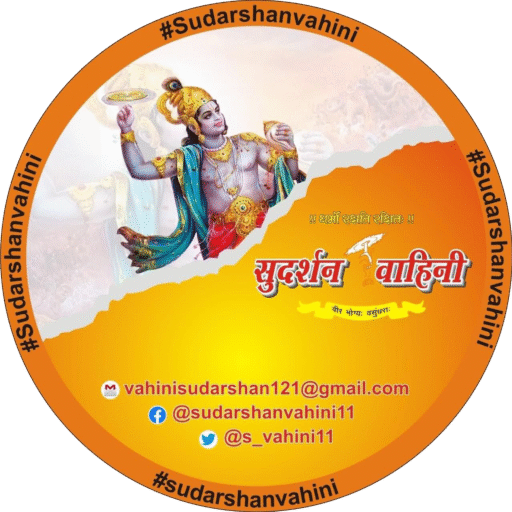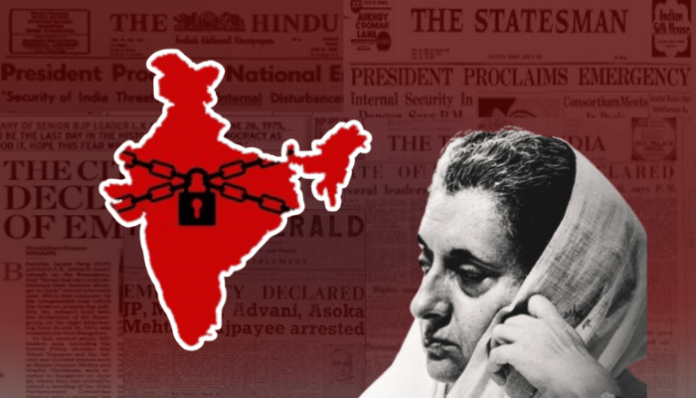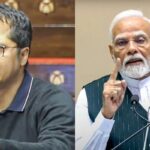It will soon be fifty years since the late Prime Minister Indira Gandhi declared an internal emergency in the country. It is the “darkest period” of independent India, from 25th June 1975 to 21st March 1977, when all civil rights were suspended and the right to free speech and expression was suppressed. The emergency dealt a severe blow to the democratic values that the nation had held dear since gaining its freedom.
Each institution that was already under the Congress government’s authority was turned into a mechanism of oppression to enhance its punitive control over various sections of society. The citizens became easy prey for the government to carry out its inhumane agenda, while anyone who dared to voice dissent was met with brutality, including the young students who were assaulted, imprisoned and even killed on unfounded accusations.
The government similarly enforced harsh censorship on the media, seeking to control and manipulate it to stifle public opinion. The press was perceived as the only independent mass media in India at that time, as the government controlled both radio and television. Notably, just as individuals who collaborated with the tyrannical regime of Indira were rewarded, so too did the elements in media who profited from the misery and anguish of the whole nation.
Print media and the Emergency
Freedom entails the obligation to protect it at all costs. Unfortunately, the majority of India’s domestic dailies abandoned the fight for press freedom following the first protest during the Emergency. There was some pushback from a portion of the print media over the first two days. Blank editorials sprouted to protest the atrocious decision, however, they quickly disappeared due to official threats. The severe restriction of press and personal liberties that followed was largely met with acquiescence.
This regression was famously summarized by Bharatiya Janata Party veteran and former deputy prime minister of India, Lal Krishna (LK) Advani, who remarked, “When Indira Gandhi commanded the media to bend, it crawled.” Furthermore, “Fawning accounts of national events, flattering pictures of Mrs. Gandhi and her ambitious son, and not coincidentally, lucrative government advertising” were spread all over their pages.
The Hindustan Times, one of the top English-language newspapers, turned into a resolute ally of the government, under the management of industrialist Krishna Kumar Birla. The Times of India also handed over its independence and adopted the official stance, as a third of its directors were government candidates. Overnight, political cartoons ceased to exist and no one risked to publish any disparaging caricatures of the prime minister.
Likewise, The Hindu acted in accordance with its belief that caution was superior to bravery. Khushwant Singh, the editor of “The Illustrated Weekly of India” at the time was also among the prominent journalists who supported Emergency. He claimed that by May 1975 public demonstrations opposing the Indira government had taken on a nationwide scale and frequently escalated into violence.
“With my own eyes I saw slogan-chanting processions go down Bombay thoroughfares smashing cars parked on the roadsides and breaking shop-windows as they went along. Leaders of opposition parties watched the country sliding into chaos as bemused spectators hoping that the mounting chaos would force Indira to resign,” he stated. He was later sent to the Rajya Sabha under her leadership and even recieved the second highest civilan honour, Padma Vibhushan, in 2007.
A compliant press
Journalists, owners and proprietors claimed that they had private reasons for staying silent, or pliant, if not openly endorsing the Emergency. The board of The Times of India declared that the publication would not protest the Emergency since, regardless of their position, the law had to be accepted and this was the legislation in effect at the moment.
“We cannot speak against it, it was decided, and as it was a privately owned paper, we had to follow suit. A few of us proposed that if we couldn’t speak against it, we wouldn’t support it either, and that was the final position the paper took,” conveyed senior journalist Inder Malhotra who was associated with the paper. He wrote a political and personal biography of Indira Gandhi in 1991.
This sterile and disinterested approach was also mirrored in the newspaper. The Ministry of Information and Broadcasting’s ineffective government handouts were mentioned in “India’s Sterile Press” which was a reference to the sterilization campaign of the Indira government. It was overseen by her son Sanjay Gandhi. The majority of the news amounted to propaganda from the government.
LK Advani pointed out, “Following the censorship of the Press there was hardly any difference between one paper and another. They were all drab and dull, inane and insipid, mere reproductions of official handouts.”
According to writer Gnani Sankaran, there was no other alternative for the media outlets. He was a correspondent for the Chennai edition of the Indian Express at the time. “The censor wanted to kill newspapers by delaying approvals. Along with letting pages go blank, sometimes innocuous and frivolous stuff like how to make onion raita (salad) had to be printed since political news could not be taken without consent,” he voiced.
Several newspapers vehemently opposed censorship during the Emergency, alongside numerous smaller, independent newspapers and journals. However, it was evident that Indira Gandhi had just as much control over the nation’s press as she did over its politics, irrespective of some fearless battles and uncompromising positions by these print media.
The giant yet pliant media houses alleged that the use of coercion during the emergency limited the options accessible to newspapers and reporters. According to Indu B. Singh, Indira employed three strategies to control the media: the distribution of government advertising, the shotgun merger of news organizations and the incitement of fear in newspaper publishers, journalists and individual shareholders.
Conformity to glamorizing the Emergency
The leading media platforms not only followed the government’s orders but also tried to depict the Emergency in a favorable light. They claimed that the anti-democratic decision was beneficial for the nation and its people. According to a piece in India Today, officials asserted that the announcement received a positive reception in the southern states including Hyderabad, Bangalore (Bengaluru), Madras (Chennai) and Trivandrum (Thiruvananthapuram). It was originally published on 15th December 1975.
It reported that people even went so far as to suggest that the move should have transpired as early as 1947. It praised the uncomfortable quiet that followed the violent suppression of opposition political parties, labour groups and all other agitators, which was labeled as “thuggish behaviour.” The artcile stated that consumers had an adequate supply of wheat and rice while prices were tightly regulated and did not increase due to seasonal demand.
It cited Congress Chief Minister Devaraj Urs, who asserted that there was a noticeable improvement in the pace of work and everyone was feeling more accountable. It was declared that a record for the collection of tax arrears had already been achieved by Andhra Pradesh which allowed the government to increase its annual plan by Rs 340 million to Rs 1870 million in addition to clearing its overdraft with the Reserve Bank, to illustrate the Emergency as a financial boon.
The report even quoted statements endorsing the Emergency as a blessing in a ugly disguise for the nation and its citizens. It was painted as an influential tool that cultivated a sense of consciousness within society, encouraging individuals to reflect more cautiously before engaging in any unlawful behavior, contrary to their customary conduct.
The article maintained that people from the lowest tiers of society, like cobblers, were provided the opportunity to have bank accounts, a privilege that was seldom available, especially for the poor, during the Congress regime. The 20-point economic plan of Indira government was commended as a solution to the nation’s long-term issues with agricultural output and the efficient distribution of basic goods, as well as its immediate issues, primarily the price increase and productivity decline.
According to the story, Congress President Devkanta Barooah questioned, “Who lives if India dies? And who dies if India lives,” at a meeting hosted by the Hindustani Mercantile Association on 11th November. He alleged that organized trade, industry, public administration, educational institutions and economic institutions would all stop operating if a few vocal and anti-democratic elements attempted to undermine peace and stability at home.
Krishan Kumar Birla who was also present there then stated that the economy was in better shape during the Emergency. Indians living overseas were provided incentives for investment and improved facilities for sending money home, while the parallel economy operated by smugglers, tax evaders, foreign exchange racketeers and hoarders was progressively being destroyed.
India Today referred to the officials as Babu (petty pen pusher) and the business community as Baniya (petty profiteer) in a highly derogatory attack and then dubbed them as the two historically strongest representations of corruption in the country and asserted that the Emeregncy made it mandatory to display commodity prices and improved administrative office efficiency.
It then applauded the Emergency for bringing students into classrooms and initiate actions to give them more affordable and simpler ways to learn. The report emphasised that in order to address the problems of unemployment and brain drain, the government had introduced vocational training and work experience.
It is important to note that Indira Gandhi became infamous for nationalizing banks and imposing state control over enterprises. Her 20-point formula also faced severe criticism for advocating increased state control over the economy, and it was also condemned as a possible barrier to the growth and efficiency of the private sector.
Stunning rationale for the Emergency and victim-blaming
Indira Gandhi had often maintained that she did not want to stifle the press, according to India Today, which also noted that there has been global concern over the restrictions placed on the press since the Emergency. Conveniently, it added that determining the boundaries between freedom and responsibility is a challenge for democracies.
It claimed that the Western media could not carry out unverified stories owing to the strict libel laws, nevertheless, in India, the process is so intricate that the media does not even regard them before publishing unsubstantiated reports and hence could share any news or rumours without supporting evidence.
The article then termed the Indian press as “wild” instead of “lively” and slammed its use of unprecedented offensive language. It then declared that press censorship laws are progressively being loosened to permit constructive criticism of government policy during the Emergency.
India Today described those opposing the Emergency as a “noisy minority” and shockingly asked, “Is discipline, efficiency and hard work without violence incompatible with democracy? Must discipline, efficiency and social responsibility be a product of fear and coercion?” It stated that while there have been grievances regarding the opposition’s silencing, non-Congress governments are functioning reasonably well in Gujarat and Tamil Nadu.
The article also attacked the politics of the coalition and charged that it only existed to overthrow Indira Gandhi and lacked ideological alignment. It also claimed that a small number of opposition members who were involved in various agitations were arrested for engaging in outrageous actions prior to the emergency.
Ironically, it also mocked freedom fighter Jayaprakash Narayan who prolclaimed a national revolution the day he was jailed and stated that he was wrong about the movement.
Adding salt to the wounds of the victims, India Today inquired, “Where is the Emergency? What a handful would consider suppression, millions of Indians do seem to consider emancipation. Whereas six months ago visitors to India heard little else but complaints about the lack of consumer products and unbearable soaring prices, the average person is grateful he can now feed his family and get more value for his rupee.”
“Where are the soldiers? Where are the guns? Where is the Emergency,” it quoted an alleged television reporter who landed in the national capital from New York. Furthermore, as if the aforementioned insensitivity was not enough, it also included the shocking comments of a politician in Delhi who, in all his wisdom, declared, “We can utilize the Emergency to enhance tourism in India. The tagline for promotional campaigns should be: Come to India to witness the Emergency. Nothing of this nature has ever occurred in any democracy before.”
Indira, the greatest oppressor of press freedom, was portrayed as receptive to criticism. The emergency was depicted as a common occurrence with no cause for concern while those who expressed legitimate worries were characterized as villains and subjected to mockery. .
Obligation to Indira Gandhi
Media organizations had their own personal motivations ranging from fear to financial incentives to back the Congress. Similarly, some aligned themselves with the oppressive Indira regime due to a profound sense of obligation towards the Nehru-Gandhi family along with financial favours and “The Times Group” was one such entity.
Ramkrishna Dalmia, part of the Sahu-Jain family, bought the group from its British owners shortly after independence. However, he abused his office as chairman of an insurance firm in the process. Pandit Jawaharlal Nehru’s government at the time disregarded this anomaly.
However Feroze Gandhi, Indira Gandhi’s husband brought up the matter in parliament and demanded an investigation. As a result, Dalmia was found guilty of financial wrongdoing after the matter proceeded to trial. He spent two years in Tihar Jail. Nehru permitted the group’s ownership to be transferred to Sahu Shanti Prasad Jain, the grandfather of the present Jain brothers and the son-in-law of the Dalmia family, despite the evidence of this deception.
The group’s new owner, Sahu Shanti Prasad Jain, was convicted of selling government-provided subsidized newsprint in the black market in the 1960s. This was against the law and a betrayal of confidence. He was imprisoned and the Indian government also acquired possession of the group and their ownership continued for more than 10 years.
However, during the Emergency, Indira Gandhi, granted ownership of “The Times Group” to Ashok Kumar Jain, the son of Sahu Shanti Prasad Jain. He is the father of Vineet Jain and Samir Jain, the current owners. It might be the sole occasion when she genuinely cared about a private company, but only to leverage their allegiance.
The majority of top journalists who were critical of the Nehru-Gandhi family and nationalist reporters were later fired by Ashok Jain. Interestingly, Jains have been regularly accused of involvement in money laundering schemes. Ashok Jain was forced to leave India when the Enforcement Directorate conducted a rigorous investigation into a case concerning the transfer of US$1.25 million illegally to a foreign account in Switzerland.
Indira’s war on press freedom
During the Emeregency era, media consisted of printed newspapers and periodicals, which were mostly dependent on the electrical supply to publish their editions. The center of newsprint in New Delhi was the Bahadur Shah Zafar Marg. The disruption in its power supply, which was managed by government firms, resulted in a significant delay or cancellation of the print for the following day’s publication.
Foreign correspondents were driven out by the regime. 29 foreign journalists were prohibited from entering India and 7 were expelled. 54 Indian journalists, including two cartoonists and six photographers, had their accreditation revoked by the enter. The majority of them were well-known for criticizing government actions and policies while they were active in New Delhi while about 250 journalists had been imprisoned.
Advertisement generated revenue for the media. The amount that users or news consumers paid was insufficient to cover the expenses of news collection, publication and broadcasting. Government advertisements contributed a significant portion of advertising revenue. The authorities employed this reality as a means of manipulation.
Meanwhile, nobody truly realized this until the government at the time used arm-twisting during the Emergency. However, the same was already red-flagged in 1965 by Chanchal Sarkar who is regarded as the father of Indian journalism. He highlighted that “government’s advertising policy has undertones of political pressure and indirect control.”
Vidya Charan Shukla, the Information and Broadcasting minister chosen by Sanjay Gandhi successfully carried out Indira’s authoritarian posture against the print media. “The press and films, otherwise outside the control of government were made to dance to the tune of the rulers by a set of draconian laws which reduced press freedom to naught and there was consistent abuse of authority in the matter of disbursing advertisement, allocation of newsprint and release of raw stock for films,” as the White Paper on Misuse of Mass Media during the Internal Emergency emphasized.
The Prevention of Publication of Objectionable Matters Act, 1976 was the final straw for Indian journalists. The act gave the government the power to ban publications for any reason related to Article 19 (2). As a result, the act essentially prohibited any media coverage of protests against government policies or anti-government criticism. It even gave right to the authorities to seize or close printing presses or to return security deposits for publishing “objectionable matter,” which comprised anything and everything.
“Indira Gandhi did not accept the basic philosophy of a newspaper is that it has to convey the people’s problems, not the government view, that a columnist must carry the voice of dissent in the corridors of power,” outlined Durga Das, head of India News and Feature Alliance. Indira’s glaring abuse of leadership during the Emergency was not surprising because this had been her policy and approach to the Indian press since the start of her rule.
Conclusion
It was clear that the Indira Gandhi’s implementation of the emergency was unethical. However, the majority of the media’s response was unbecoming. “The first and most crucial round of battle for freedom of the Press and civil liberties was lost without a struggle in the first week after the emergency,” voiced former attorney-general for India Soli Jehangir Sorabjee.
The newspapers and their editors were aware of the ridiculousness and illegality of the censor’s conduct but with the exception of a few courageous individuals, none of them were prepared to contest it in court. Printers did not want to risk losing their presses while editors were more concerned with keeping their jobs.
The Congress party and its liberal media affiliates along with their entire ecosystem have adopted a principle from propaganda strategy of Joseph Goebbels, which stated, “Accuse the other side of that of which you are guilty.” While they accuse the Modi government of restricting media freedom and even coin the phrase “Godi Media” to disparage journalists who do not tow their narrative, the truth is quite the opposite. Rudyard Kipling famously wrote:
The Pope may launch his Interdict,
The Union it’s decree,
But the bubble is blown and the bubble is pricked
By Us and such as We.
Remember the battle and stand aside
While Thrones and Powers confess
That King over all the children of pride
Is the Press – the Press – the Press
However, there has never been a more profound attack on the media and the press than during the tenure of Congress and there are no journalists more submissive than those loyal to the grand old party.














